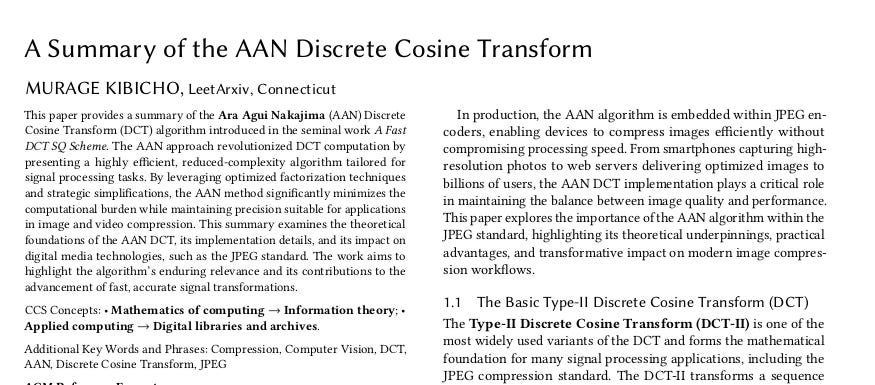AAN Discrete Cosine Transform [Paper Implementation]
Implementing the Ara Agui Nakajima DCT compression algorithm
Keep reading with a 7-day free trial
Subscribe to LeetArxiv to keep reading this post and get 7 days of free access to the full post archives.


